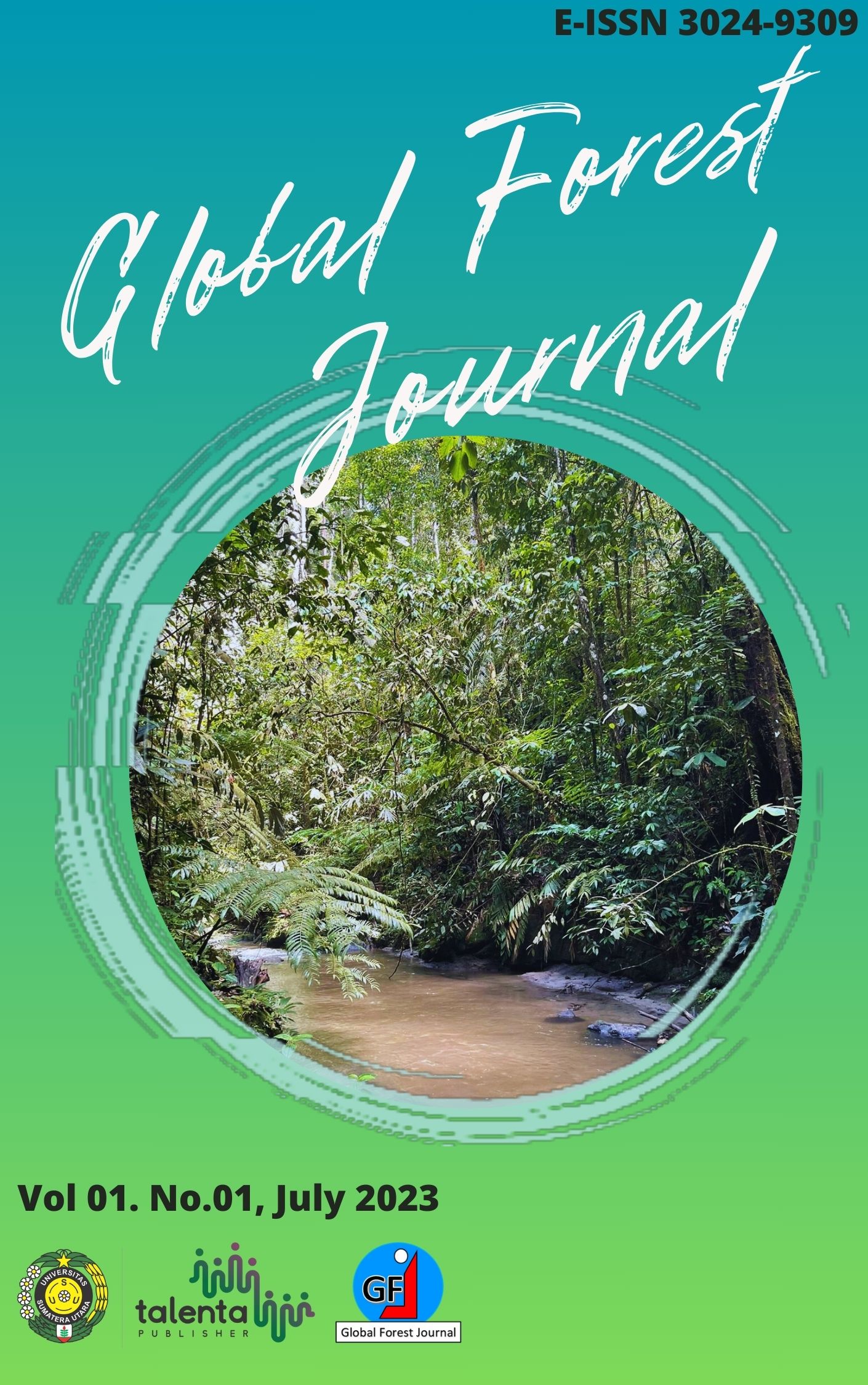Analysis of the Tapanuli orangutan (Pongo tapanuliensis) population in other land use areas, Arse sub-district, South Tapanuli Regency
DOI:
https://doi.org/10.32734/gfj.v1i01.13249Keywords:
Batang Toru, Human Conflict, Mixed Garden, NestAbstract
Tapanuli Orangutan (Pongo tapanuliensis) is a globally critical species (critically endangered) due to the decreasing area of natural habitat. Orangutans can reach out of their natural habitat outside the forest and into community fields for feeding. Orangutans make the other land use not only a place to stopover but also a home range and living area marked by nests. The study aims to obtain information on the characteristics of nests and the estimated population of the Tapanuli orangutan (TO) in the other land-use area. This research method uses line transects placed by systematic sampling with a distance between lines of 3 km and population data analysis using calculations from the van Schaik formula. From the results of the 11 research lines, 14 nests were obtained consisting of 3 class B nests, 5 class C nests, 3 class D nests, and 3 class E nests. The characteristics of the most dominant nests were class C with the most preferred positions II and III and nest finding highest in Quercus maingayi tree. The research found that the density of the TO was eight individuals/1000 ha.
Downloads
Downloads
Published
Issue
Section
License
Copyright (c) 2023 Global Forest Journal

This work is licensed under a Creative Commons Attribution-ShareAlike 4.0 International License.












